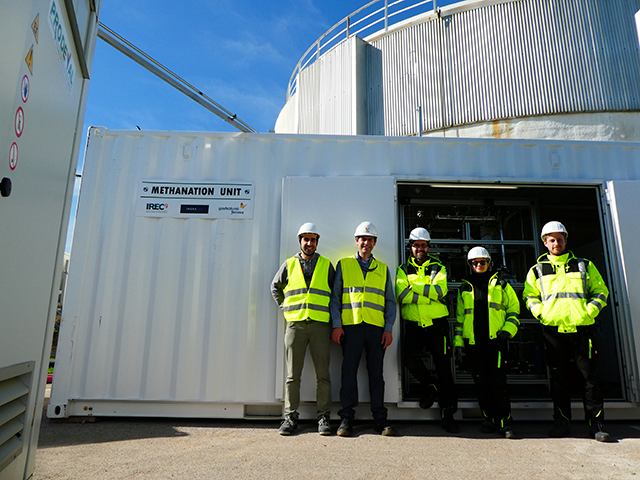Spanish natural gas and power provider Gas Natural Fenosa has revealed its CoSin project – a pilot power-to-gas plant developed at a waste water treatment plant at Sabadell, near Barcelona – has started experimental operations which are scheduled to last 18 months.
The company says the facility produces hydrogen and combines it with carbon dioxide from biogas using only water and the greenhouse gas as reactants. As for the methanation process, Gas Natural Fenosa said it was specially designed for Spain, where regulations impose a methane percentage above 95% for injection into the gas network.
“The main objective of the CoSin project is to develop synthetic fuels using biogenically-sourced carbon and water. It intends to meet the need of current and future energy systems to be able to store energy chemically, thereby solving the challenge of storing renewable energies on a large scale; helping to improve the environment and reduce the emissions of carbon dioxide,” the company says.
The project, being developed with Spain’s Institut de Recerca en Energia de Catalunya (IREC) research centre and German spin-off Ineratec GmbH, is part of the RIS3CAT Energy Community initiative, funded by the regional government of Catalonia and co-financed by the European Union's Regional Development Fund.
The main advantage of power-to-gas, the company says, is that gas from renewable sources can be transported and stored using the existing gas infrastructure.
Another European gas provider, Netherlands-based natural gas infrastructure and transportation company Gasunie, launched a pilot power-to-gas project last year, and more recently Toshiba Energy System & Solutions Corporation (Toshiba ESS) began a large power-to-gas demonstration project in Japan.
The potential of power-to-gas and hydrogen has also been highlighted by a recent report of the UK Institution of Mechanical Engineers (IME), which has called on the British government to support the growth of power-to-gas storage technology.
The idea of using the gas transmission system as a buffer for intermittent solar and wind has become popular in the last decade, although regulatory hurdles remain for the technology. According to a recent position paper from the European Power to Gas Platform, power-to-gas technology raises legal issues due to its cross-sectoral nature, as it is linked to both electricity and gas networks and markets.
The authors of the document claim it is still uncertain which role system operators can take in power-to-gas and that there is a concrete risk – with the current “inconsistent” definitions of energy storage used by the European Commission, European Parliament and the Council of the European Union – that gas providers may not be allowed to operate in the segment.
The organization has recommended four key actions to take at European and national level to tap the potential of the emerging technology: A widening of the functionality of power-to-gas which, rather than being considered only an energy storage technology should also be treated as an energy conversion activity which produces a gaseous energy carrier; a cross sectoral regulatory framework; more clarity on the exemptions and strict limitations for system operators; and indicating power-to-gas as an alternative in the cost-benefit analysis of grid extensions, thus enabling electricity and gas networks to function as a single, hybrid network.
This content is protected by copyright and may not be reused. If you want to cooperate with us and would like to reuse some of our content, please contact: editors@pv-magazine.com.




The suggestions look sensible on the face of it, and regulatory clarity is clearly essential for P2G to thrive. Let me add that the new sector should commit to the highest standards of leakage prevention. There is no point in cutting one greenhouse gas while boosting another.